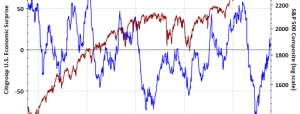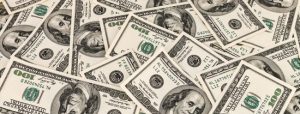Last week, I did a fairly extensive analysis on the release of the 9-page “Trump Tax Cut” plan.
The most important aspect of that discussion was the difference between 1982, the last time there was permanent tax reform, as compared to today.
“Comparing Trump’s economic policy proposals to those of Ronald Reagan. For those that deem that bullish, we remind you that the economic environment and potential growth of 1982 was vastly different than it is today. Consider the following table:‘”

The differences between today’s economic and market environment could not be starker. The tailwinds provided by initial deregulation, consumer leveraging and declining interest rates and inflation provided huge tailwinds for corporate profitability growth.
Most importantly, when tax cuts were implemented in the mid-80’s, the U.S. economy was just coming out of back-to-back recession versus being in the third longest economic expansion on record to date.

However, besides the fact the economic backdrop is diametrically opposed to what is was during the “Reagan years,” we also need to look at the backdrop of who actually pays taxes to begin with.
Who Pays Taxes
While the current tax plan has not defined actual income levels as of yet, we can make some assumptions from previous iterations of proposals. The entire premise behind the tax cuts is that it will unleash economic growth, generate millions of jobs, bring back manufacturing to America and lead to higher wage growth.
However, given that roughly 70% of economy is driven by personal consumption, the tax cuts will need to increase the amount of disposable incomes available to individuals to expand consumption further, thereby increasing overall economic growth.
So, here is the issue of tax cuts for the middle class. The chart below shows “who pays what in Federal taxes.”

Look at that chart closely.
But it is even more glaring when we look at the taxes paid by just the top 20% of income earners.

Given that roughly 2/3rds of income taxes are paid by the top 20%, the reality is that tax cuts will have their greatest impact in reducing the tax burden of those individuals.
The picture gets worse when you look at just INDIVIDUAL tax liabilities. The bottom 80% currently pay only about 18% of individual taxes with top 20% paying the rest. Furthermore, the bottom 40% currently have a NEGATIVE tax liability, and with the new tax plan cutting many of the deductions currently available for those in the bottom 40%, it could be the difference between a tax refund and actually paying taxes.







